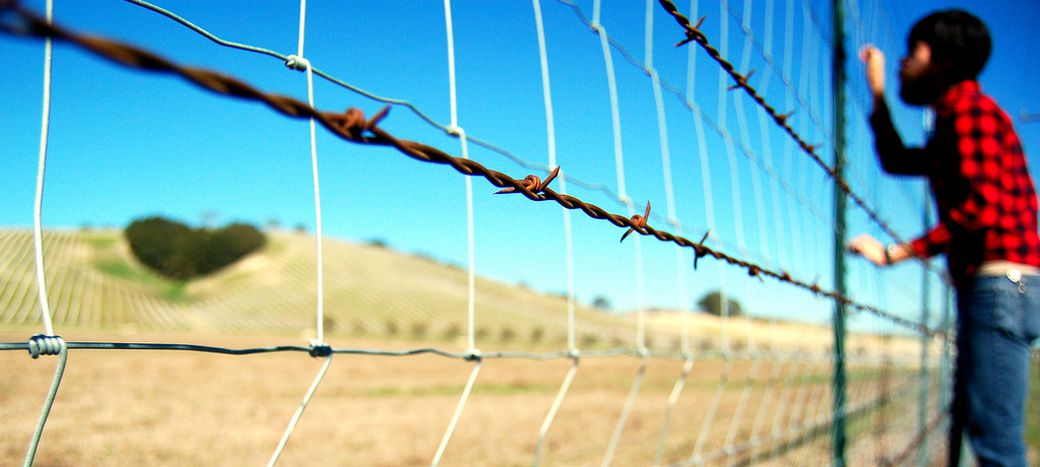
From Schengen to Frontex: The new meaning of borders
Published on
How has the concept of free movement of people changed throughout recent years? A look at the freedom-security nexus in light of the European refugee crisis.
"Imagine if EU leaders were given a sneak preview of today’s eurozone two years ago. They would have done whatever necessary to prevent the crisis in the single currency from escalating into something much worse. The same may be true of Schengen."
The idea of freedom behind Schengen
Running parallel to the beginning of trade relationships, the movement of people across nation-state borders became a concern for the founding countries of the European Economic Community. It was only in 1985, when the first agreement on the issue was signed by Germany, France, the Netherlands, Belgium and Luxemburg. Among its provisions, the Schengen Agreement, which is still fully (at least theoretically) operative today, defined rules for visas, asylum and external border checks. Followed by a convention in 1990, this set of laws initially took shape outside the EU framework being inspired by values such as freedom of movement.
Moving towards securitisation: How to understand these measures
We must consider the context in which this agreement took place in order to understand the proliferation of laws to regulate the movement of people within Europe. Back in the early 90s, Western Europe - especially France and Germany – had to deal with an increasing number of Balkan refugees as well as people coming from the former Soviet Bloc. The media coverage at that time fostering the public concern contributed to making migration a "contentious issue". There is therefore another major and controversial shift to take into account, namely a progressive "securitisation" of migration that started to shape European policies in the early 2000s. And this trend is showing no sign of slowing down with the challenge posed by international terrorism and the widespread popular belief that the two phenomena are related.
From Schengen to Frontex: Security over freedom
When explaining the establishment of Frontex these circumstances must be taken into consideration. After the Commission’s proposal for a European Border Agency in 2003, the most infamous surveillance mechanism at the EU’s disposal took shape and was established in less than a year. Interestingly, one could argue that the need for solidarity over a fiercely defended cause, i.e. the safety of national borders, contributed to the rapidity with which "ad-hoc" centers on border control turned into an extensive coordination agency. This however has not resulted in a more efficient management of migration flows, neither preventing nor reducing mass movements to Europe. But most importantly, it has not helped to put migrants and refugees in a safer place. On the contrary, more than 37.000 migrants died in 2015 alone, on what should have been their journey of salvation to Europe.
More refugees, more Frontex?
Even though the Syrian crisis worsened and the number of refugees escaping their homeland towards the safer Western port subsequently increased, the reactions of the EU and its policies have not changed efficiently throughout the last decade. The lack of adequate responses can especially be seen in 2015, which ironically marked the thirtieth anniversary of the freedom of movement sanctioned by Schengen. On the contrary, Frontex has been reinforced and Schengen was temporarily suspended in the summer of 2015 as the crisis expanded to a staggering scale, which seemed to prove to be unbearable for German leaders and others.
What if Merkel’s decision to suspend Schengen was to provoke a chain reaction throughout Europe and all Eastern States, led by the actions of Hungary, to start building fences and prevent people from continuing their journey, thus depriving them of their inherent right to seek safety and refuge?
The failure of a Fortress Europe: What’s next?
Instead of condemning these violations of not only values but also legal obligations, the European Commission recently proposed a reinforcement of Frontex for the surveillance of external territorial and maritime borders, allowing for the possibility of personnel deployment in the case of an emergency. The deterioration of what can be described as humanitarian crisis is not accompanied by an adequate European response, which now shows solidarity only within its secured territory. The "Fortress Europe" model has not worked so far. The idea of free movement conceived in the 80s is progressively losing its meaning if we consider what happens at the outskirts of our European comfort zone. “Rather than investing millions more in fences, patrols, and an EU Border Guard, we need the courage to accept that the policies of exclusion have failed.”
---



